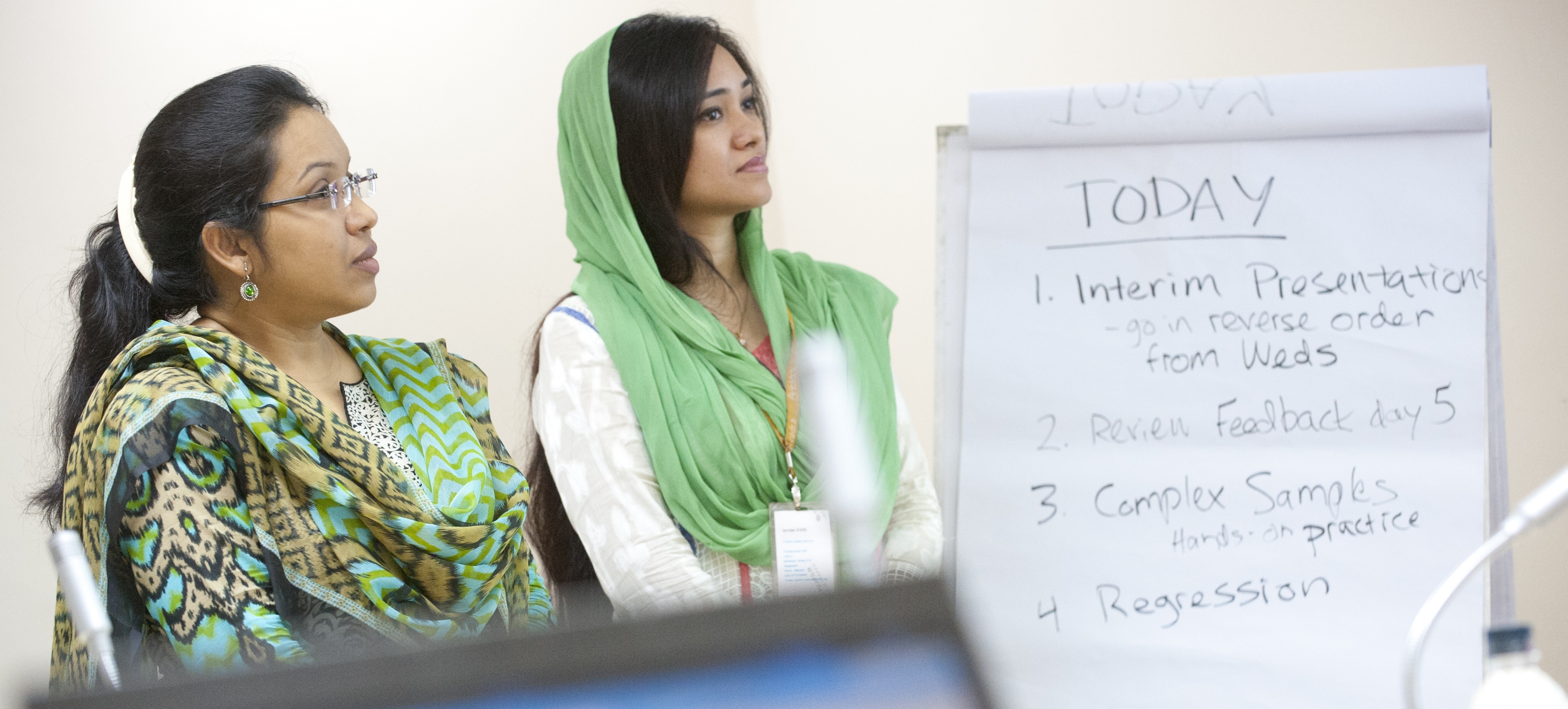Journal Articles
Search our database of 1000's of peer-reviewed journal articles that feature DHS data.
Featured Studies
Featured research topics go beyond a single research paper and often include multiple publications and user-friendly summaries and dissemination materials.
The DHS Fellows Program
Researchers in DHS countries work with DHS analysts to design, analyze, and write a publishable paper.
DHS Analysis Blogs
Read more about our recent research, innovative methods, and success stories.
Research and Further Analysis

The DHS Program's in-house Research and Analysis team conducts rigorous, timely, and innovative mixed-methods research on topics related to global public health, demography, and social epidemiology. Our team also trains, mentors, and closely collaborates with fellow researchers and stakeholders who are driven to utilize DHS Program surveys and other survey data to inform programs and policies in various countries and contexts.
Visit the publications search for a full list of publications. Also, go to the journal articles search for a full list of published journal artilcles that feature The DHS Program data.
DHS Research Reports
Jun 2009
Men's Reproductive Health: Findings from the Demographic and Health Surveys, 1995-2004This report documents both socioeconomic and demographic characteristics of male respondents to the DHS surveys, as well as male attitudes, preferences, and behaviors relating to contraception, fertility, and health in 40 developing countries.
Topics: Fertility and Fertility Preferences, Gender, Wealth/Socioeconomics
Apr 2009
Fertility Transition in Sub-Saharan Africa: A Comparative Analysis of Cohort Trends in 30 CountriesThis study examines fertility trends for 30 sub-Saharan African countries with Demographic and Health Surveys (DHS) between 1986 and 2006.
Topics: Fertility and Fertility Preferences
Sep 2008
Fertility Changes in Sub-Saharan AfricaThe study provides an overview on fertility trends in Africa in the second part of the century.
Topics: Fertility and Fertility Preferences
Sep 2004
Infecundity, Infertility, and Childlessness in Developing CountriesThis study utilizes data from 47 Demographic and Health Surveys in developing countries to examine levels, trends, and differentials in women’s inability to bear children.
Topics: Fertility and Fertility Preferences
Jul 2003
Trends in Marriage and Early Childbearing in Developing CountriesProfound demographic changes are occurring in the developing world in connection with women’s age at entry into marriage and parenthood.
Topics: Fertility and Fertility Preferences, Gender
Dec 2002
Fertility Levels, Trends, and Differentials 1995-1999Based on DHS surveys conducted between 1990 and 1999, this report shows fertility rates, trends, and differentials for 43 countries.
Topics: Fertility and Fertility Preferences
Jul 2002
Trends and Differentials in Adolescent Reproductive Behavior in Sub-Saharan AfricaFertility levels in sub-Saharan Africa are among the highest in the world.
Topics: Fertility and Fertility Preferences, Gender, Youth
Apr 2002
Reproductive Preferences in Developing Countries at the Turn of the CenturyThis report is a review of reproductive preferences in 56 developing countries conducted by DHS between 1990 and 2000.
Topics: Family Planning, Fertility and Fertility Preferences
Sep 2001
Unmet Need at the End of the CenturyThis report is a review of the extent of unmet need for family planning in 55 developing countries.
Topics: Family Planning, Fertility and Fertility Preferences
Jun 2001
The Contraception-Fertility Link in Sub-Saharan Africa and in Other Developing CountriesThe focus of this analysis is to explain why the correlation between contraceptive prevalence and the fertility rate has been so much lower in sub-Saharan Africa than in other parts of the developing world.
Topics: Family Planning, Fertility and Fertility Preferences